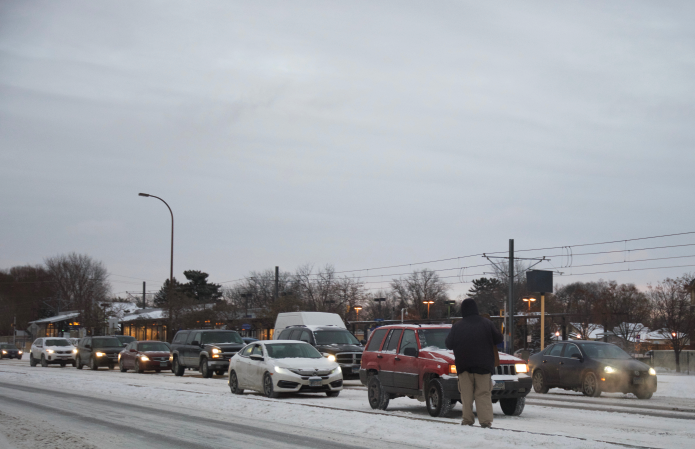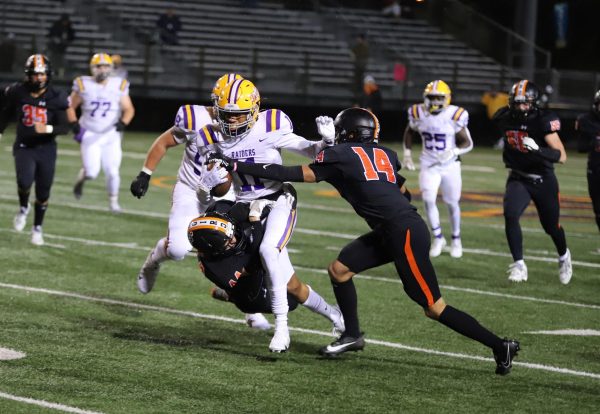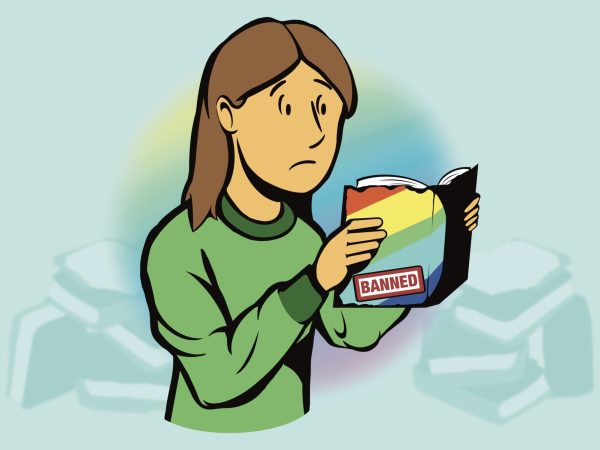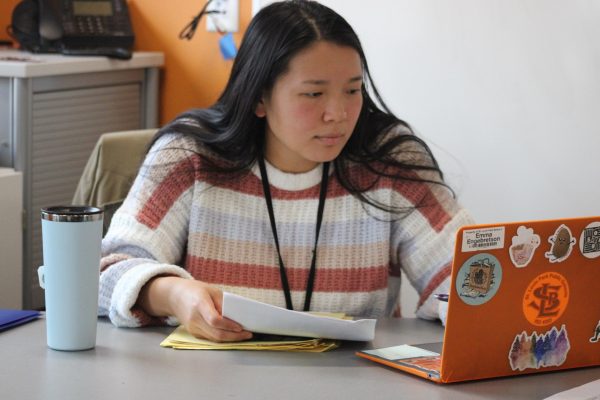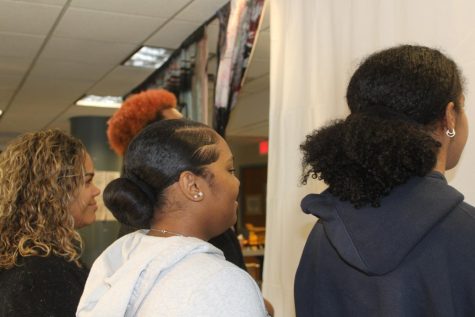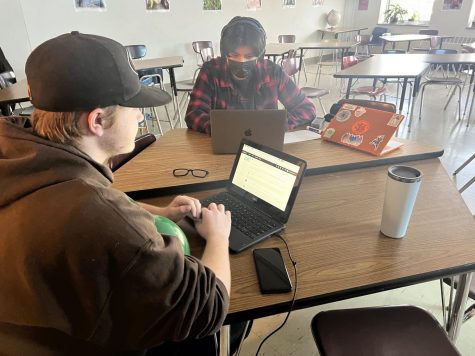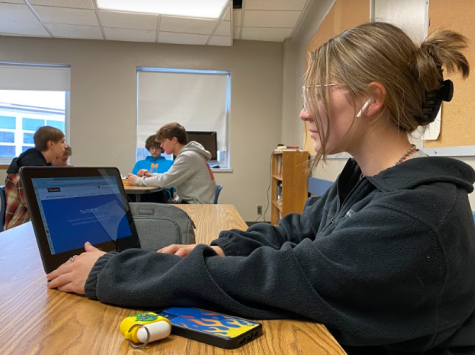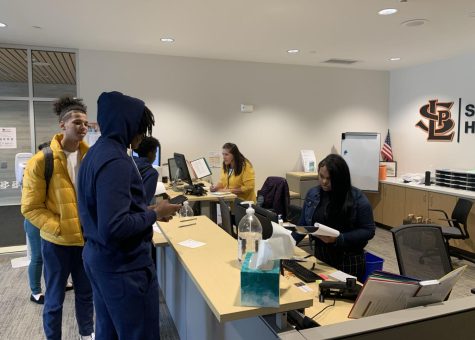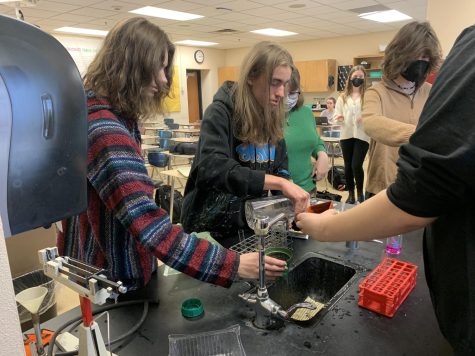Winter creates danger for homeless population
Cold weather leads to increased concern
A homeless man stands on highway 55 Jan. 11. Homeless are in increasingly dangerous conditions as winter temperatures continue to plummet.
Surrounded by local homelessness, freshman Janiah Davis said she felt motivated to use her earnings to take action in bettering her community.
“I haven’t been with any organization, but I moved a month ago, and I lived in a bad neighborhood with a lot of homeless people. So when I was working, I would get pizzas and hand them out,” Davis said. “It was something I was really determined to do.”
According to social worker Daniel Perez, the intense Minnesota winters make it increasingly difficult to stay safe when homeless.
“What I feel about wintertime, especially when I think about people who are homeless, we live in such a brutally cold state that it is pretty tough to survive,” Perez said.
Sophomore Shaqued Benharush said it is the responsibility of those who can give aid to help the homeless community.
“It’s so cold and people, they don’t have enough money for food, so I’m guessing they won’t have enough money for blankets and stuff,” Benharush said. “A lot of people die that don’t have homes in the winter, and I feel that people with a lot more benefits and a lot more money could do something to help them.”
Junior Krista Morhauser said although she cannot relate to the situation of those who experience or have experienced homelessness, she is aware the topic often goes unspoken.
“I feel it’s hard to imagine what those people could be going through. It’s so cold outside, it’s winter time, and they have nowhere to go, so I couldn’t imagine having that feeling,” Morhauser said. “I think people don’t talk about it because they don’t know what to do about it.”
Junior Maddie Hoffman said she thinks there is limited conversations about this issue because people lack knowledge about homeless women’s health concerns and the topic as a whole.
“I think that people like to stray away from that topic because we are not as knowledgeable about it as we could be. We can’t experience that because we’re not homeless, so we don’t have the same process and understanding,” Hoffman said. “I think this topic goes with women too as they have to go through their menstrual cycles homeless and don’t have access to those kinds of products. These things aren’t talked about because we aren’t knowledgeable about it.”
The additional efforts to give Super Bowl visitors housing neglects the homeless population of Minneapolis, according to Perez.
“(Minnesota) has a homeless population that is seeking refuge in Minneapolis and other suburbs while they are making space for visitors to come here and have fun,” Perez said. “In the larger scheme it makes me think about what it would be like to not have a home and be out there, especially today when it’s snowing.”
Junior Mohamed Sharif said he thinks it is unfortunate the homeless community is being overlooked as the Minneapolis community is concerned about where Super Bowl viewers will stay.
“I wish there was something I could do for the people who are homeless,” Sharif said. “I think we should have better shelters for those people, and we have people for the Super Bowl coming in having lots of hotels and places to stay, but we don’t worry about our own community and that is very sad.”
According to WCCO Minneapolis, First Covenant Church, located across the street from U.S. Bank Stadium, is moving their homeless shelter to St. Olaf Catholic Church, starting the Thursday of Super Bowl weekend for security reasons.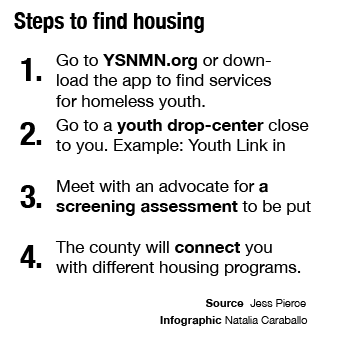
Simpson Housing program manager Jess Pierce said the programs at the 66 West location are dedicated to assisting the youth homeless population in finding affordable places to stay and live.
“66 West is the first program that has been invested in the youth homeless world,” Pierce said. “(The program) consists of on-site case management and on-site housing, which is pretty cool and innovative because a lot of housing these days are scattered sites, so young people are just in market-rate regular apartments throughout the metro.”
Perez said the Birdfeeder and STEP are key resources for students struggling with food as well as their living situation.
“We definitely have the Birdfeeder program, who provides snacks to me and other staff members here in the counseling office and perhaps even other teachers in the school, so that kiddos who don’t have a home, don’t have food available are able to get snacks both here and to take home,” Perez said. “We also have STEP nearby that provides a lot of services, clothing, sometimes help with bills and all those things.”
Morhauser said her church provides aid through volunteer activites.
“We make sandwiches for the homeless people downtown and bring them into the warm church to be out of the cold for a couple hours,” Morhauser said.
Pierce said she found gift cards, as well as hygiene products, are favored by students facing homelessness.
“There is a lot of value in saying ‘here is a gift card get what you want to get’ instead of people dictating what people eat or what they think they should be eating. That is a big thing I encourage people to do as far as donation are concerned,” Pierce said. “Hygiene-wise, specifically feminine hygiene products are always a need.”

Hey guys, I’m Anna. We made it to senior year. Ya girl is a managing editor this year. Hmu if you need your hair braided or ears pierced… I got all...

Hi, my name is Alec Pittman, but most people call me Pitt. I am one of the managing editors here on Echo. I enjoy writing columns about my current and...



